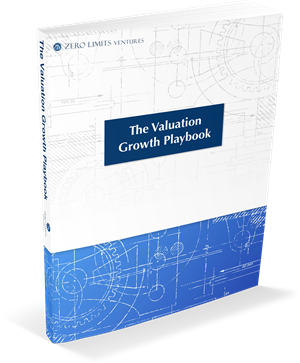[This article was originally published on CEO.com]
Whether you’re looking to flip your company quickly and walk away with a bundle of cash or hoping to see your “baby” grow over time, there’s one thing you need in your entrepreneurial tool belt: a quality exit strategy.
You might wonder why you’d need an exit strategy when your startup is barely off the ground, but establishing one from the get-go will prove vital in getting the most out of your business.
The Benefits of Beginning With an End in Mind
There was a time when both the innovation cycle and time to market were painfully long processes. The probability of making an efficient, profitable exit was rather small. After all, producing a product took two or three years. Tack on a few more years to get it to market, acquire customers, and build revenue. After that, you still needed to achieve two to three quarters of consecutive growth (if not profitability) before you’d be seriously considered for funding or acquisition.
Now, because of the rapid pace of innovation and the ability to reach market with less money, the most lucrative plan to generate the greatest rate of return is starting a business on the value growth exit trajectory. Also, positioning for an exit or acquisition within a three-year time frame is ideal for generating a solid return.
And the new model is working: The average U.S. startup raises $41 million and sells at $242.9 million. The average duration, from start to exit, is seven years. That sales figure represents nearly an eightfold increase and was facilitated by having a sound exit strategy from the start.
Here are five reasons you should formulate an exit strategy from the beginning:
1. It’s inevitable.
Nothing lasts forever. Realize that your business is going to exit at one point or another. An exit strategy will help maximize your returns from a financial and personal standpoint.
2. It improves your business.
Even if you wouldn’t dream of selling your “baby” today, creating an exit strategy now will help bolster your business’s lasting power. Not only will it tell you where to invest your money, but it will also provide a pathway to better value-based decision-making. In turn, this will increase the overall value of your venture.
3. It helps you determine value.
To find out your business isn’t worth what you’d hoped is heartbreaking. Imagine that heartbreak after you’ve invested years of sacrifice and struggle. A proper exit strategy will establish key value drivers for your business. If you’ve done the research and know what potential buyers will find important, you’ll know where to invest your time and hard-earned money. Remember: The value of your business is what generates returns for you, not just the income you derive from it.
4. It helps acquire funding.
Without an exit strategy, you’ll be hard-pressed to acquire proper funding. Not only do investors want to know the size of an expected return, but they also want to know when to expect it. Without an exit strategy, you have no way of knowing. Without a value growth plan, you have no formula for maximizing that return. If you want to catch Mark Cuban’s eye, know where you’re going and be able to show it.
5. It provides a bigger payoff.
Establishing a solid exit strategy from the get-go promises a higher probability of a higher return rate. The earlier you start the exit process, the likelier you are to exit at the apex of value growth. You’ll know exactly where to invest your funding, and you’ll have a reasonably accurate expectation for the rate of return because you already have the business cued up.
Building a Strategy for Success
While the benefits of having an exit strategy are fairly straightforward, building an effective strategy is a more nuanced endeavor. You must eliminate constraints, identify prospective buying profiles and the value of each, and remember to pace yourself.
A successful strategy will take all elements of your company into account. Dig deep and discover every opportunity — from intellectual property to competitive advantages — as well as any barriers that keep you from entering potential trademarks. Next, look at different kinds of buyers. Examine the market to see who might be interested. That may mean looking at a competitor, a company that isn’t currently in your industry, or even an existing market partner. Take into account as many possibilities as you can.
Finally, an effective exit strategy puts the majority of effort into where the market values you: your primary value drivers. If you don’t focus on these, you’ll spend years building something, only to find that you focused on the wrong areas and squandered your true value growth opportunities.
In the end, think of your exit strategy the same way a jockey thinks of a horse race. The jockey has a plan for pacing and positioning that will place him at certain points of the track at strategic moments: inside on the rail, outside the rest of the pack, in front of this horse and beside another. It isn’t random — he enters the track ready to steer his horse in the direction that will win the race. To “win” the optimum valuation race in today’s market, think as a jockey does.
The exit is where all of your hard work will eventually pay off. Keep the endgame in mind at all times. As you work toward it, your bottom line will thank you.
Steve




